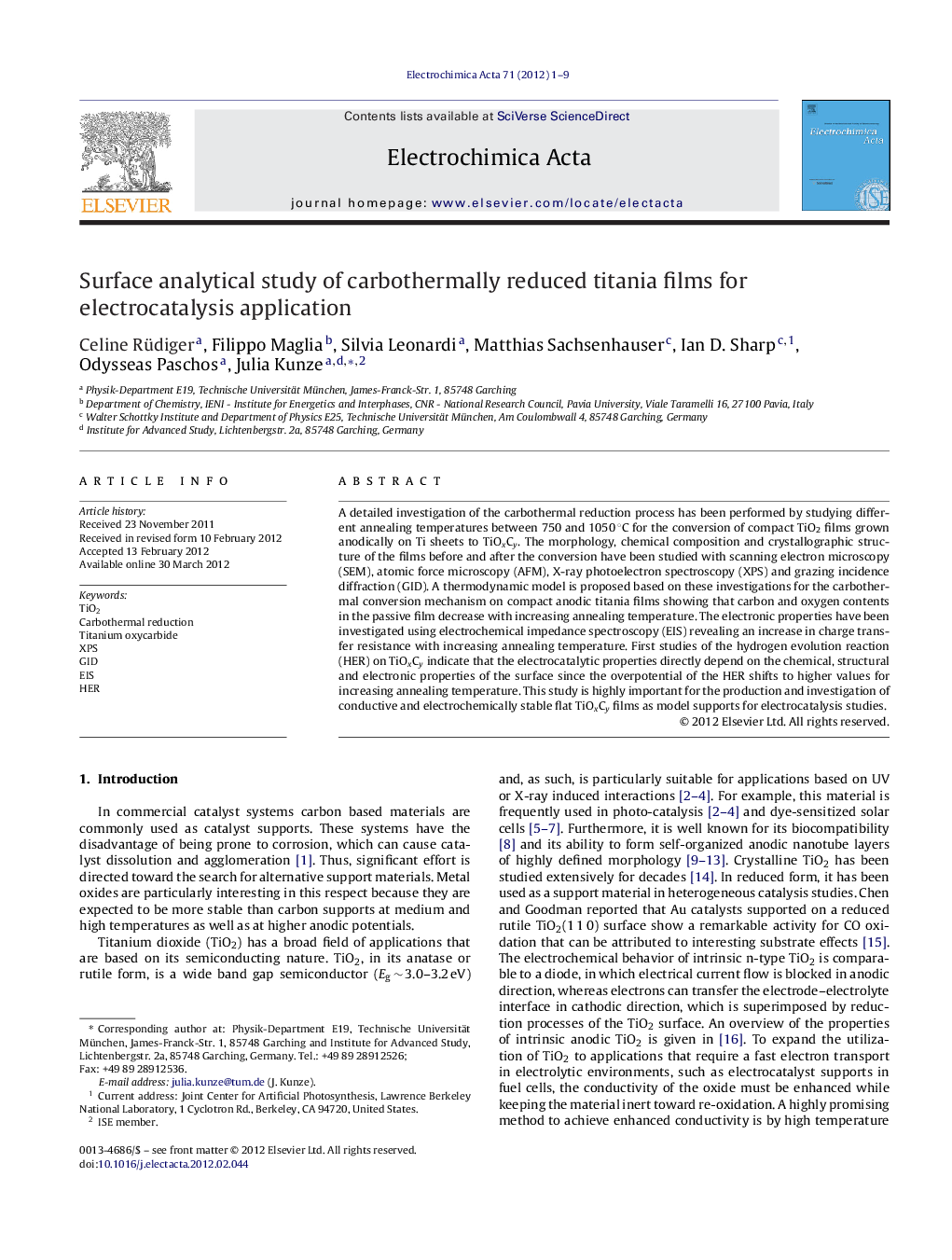| Article ID | Journal | Published Year | Pages | File Type |
|---|---|---|---|---|
| 188628 | Electrochimica Acta | 2012 | 9 Pages |
A detailed investigation of the carbothermal reduction process has been performed by studying different annealing temperatures between 750 and 1050 °C for the conversion of compact TiO2 films grown anodically on Ti sheets to TiOxCy. The morphology, chemical composition and crystallographic structure of the films before and after the conversion have been studied with scanning electron microscopy (SEM), atomic force microscopy (AFM), X-ray photoelectron spectroscopy (XPS) and grazing incidence diffraction (GID). A thermodynamic model is proposed based on these investigations for the carbothermal conversion mechanism on compact anodic titania films showing that carbon and oxygen contents in the passive film decrease with increasing annealing temperature. The electronic properties have been investigated using electrochemical impedance spectroscopy (EIS) revealing an increase in charge transfer resistance with increasing annealing temperature. First studies of the hydrogen evolution reaction (HER) on TiOxCy indicate that the electrocatalytic properties directly depend on the chemical, structural and electronic properties of the surface since the overpotential of the HER shifts to higher values for increasing annealing temperature. This study is highly important for the production and investigation of conductive and electrochemically stable flat TiOxCy films as model supports for electrocatalysis studies.
► It is possible to convert flat anodic titania films into TiOxCy phases of differing composition and thickness which both depend on the annealing temperature. ► The electrocatalytic behavior is linked to the conductivity of the TiOxCy films and thus dependent on the surface electronic properties induced by carburization and annealing. ► The findings demonstrate that TiOxCy is a potential candidate to replace carbon as a support for use in fuel cells.
